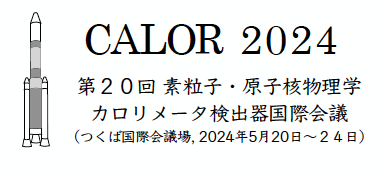Speaker
Description
The Electron-Ion Collider (EIC) under construction at Brookhaven National Laboratory in the USA, will be a unique particle accelerator where electrons will collide with protons or nuclei to scan the internal structure of nucleons. Electromagnetic Calorimeter (EmCal) based on lead tungstate (PbWO4) crystals is proposed to be a key element of particle identification system at EIC.
A quality assurance of crystals produced by CRYTUR, the light yield and transmission of crystals have been measured at A.I. Alikhanyan National Science Laboratory (AANL). Measurements showed that the crystals have an average light output of ~16 pe/MeV, and that within error, the light output of crystal at two different points located at a distance of ~14 cm from each other is almost the same (within 3 − 5 %). A prototype of EmCal is designed, constructed and tested with cosmic muons. It consists of 16 PbWO4 crystals arranged in a 4 × 4 matrix.
The results obtained are compared with results from other groups of the EIC EmCal collaboration, Selection of final design of the EIC calorimeter and requirements to the characteristics of crystals will be based on combined analysis of the results from different groups of collaboration.
We are planning to continue these studies, as well as to study radiation hardness and low energy resolution of EmCal using electron beam with energy of 10 - 75 MeV from linear accelerator LINAC-75 and proton beam with energy of 18 MeV from C18/18 cyclotron at AANL.
